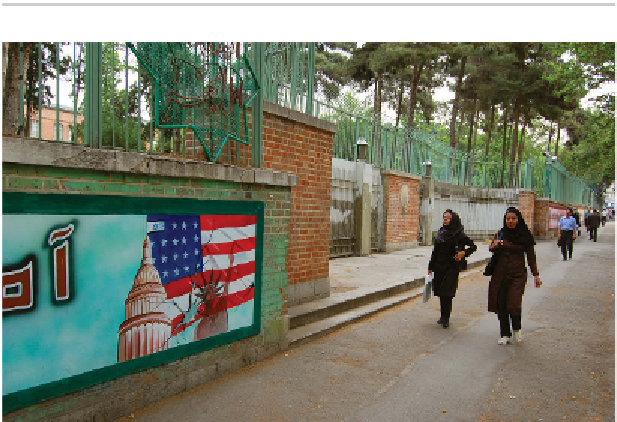Travel Reference
In-Depth Information
h e former US Embassy, where the crisis took place, was a stop on our
i lming route. Our minder/guide, Seyed, seemed almost proud to let us walk
the long wall of anti-American murals. He encouraged us to i lm it, making
sure we knew when the light was best for the camera.
As I walked along the wall, it occurred to me that the crisis had hap-
pened three decades ago. While it remains a sore spot for many Americans,
Iranians—over half of whom weren't even born at the time—appeared con-
tent to let the murals fade in the sun. h e murals seemed to drone on like an
unwanted call to battle...a call that people I encountered had simply stopped
hearing. In fact, looking back, many Iranians believe that the hostage crisis
hijacked their Revolution. By radicalizing their country, it put things in the
hands of the more hard-line clerics.
Today the Islamic Revolution has become deeply ingrained. After chatting
with one young man who didn't look as if he was particularly in compliance
with the Revolution, we said goodbye. Later—after he'd thought about our
conversation—he returned to tell me, “One present from you to me, please.
You must read Quran. Is good. No politics.” Looking at the evangelical zeal
in his eyes, I realized that he had just as earnest a concern for my soul as a
pair of well-dressed Mormons who might stop me on the street back home.
Why should a Muslim evangelist be any more surprising (or annoying, or
menacing) than a Christian one? He simply cared about me.
Thirty years later, the former US Embassy wall is still lined with hateful political posters.















































































